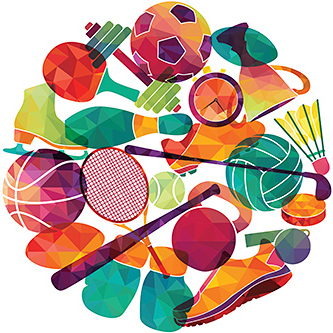Every January, many sports athletes and active people resolve to make this the year they'll reach their goals related to health and wellness, fitness or enhanced performance. To make it happen, they make a commitment to hit the gym more often, train harder and push themselves as far as they possibly can, often to the point of physical exhaustion.
Obviously, no activity or sport is free from injury. But injury doesn't have to keep people from the activities and sports they love, says Jay Greenstein, DC, CCSP, CKTP, CGFI, founder of Sport and Spine Rehab and Sport and Spine Athletics, and chairman of the Federation of International Chiropractic in Sports World Olympian Scholarship Program. In fact, he believes chiropractors specifically are in a prime position to help prevent three of the most common exercise and sports-related injuries today.
ACL Injuries
The first common injury is an injury to the anterior cruciate ligament, or ACL. The American Academy of Orthopaedic Surgeons (AAOS) reports1 that ACL tears are one of the top causes of knee instability and dysfunction; and that they often affect female athletes disproportionately, with some studies finding that females sustain ACL ruptures "at two to eight times the rate of males."
Dr. Greenstein agrees, sharing that ACL injuries do tend to be more of an issue for female athletes, sometimes because of their different body structure (wider hips and larger posterior tibial slope), and other times due to differences in motion and function. Research published in the Journal of Bone and Joint Surgery suggests genes may play a role as well.2
Because these injuries occur so often, Dr. Greenstein believes this is a great opportunity for chiropractors to position themselves as leaders in helping to prevent them. One way to do this is to institute an ACL tear prevention program. This could be achieved via on-site programs offered at local schools or in clinics, he says, simply by holding a group class to show proper exercises and training techniques for preventing ACL issues.
Ankle Sprains
A second area of opportunity that exists for DCs who want to help their patients reduce sports and exercise-related injuries involves dealing with the common issue of ankle sprains. The University of California San Francisco Medical Center reports that on any given day, this injury impacts approximately 25,000 people.3
Dr. Greenstein states that prevention of ankle sprains for male athletes is critical since they are extremely common in male sports, especially football. Why? According to a study published in the American Journal of Sports Medicine, one of the top risk factors for ankle sprains is previous injury.4 Dr. Greenstein explains this is because treatment often stops once the pain goes away, not necessarily once the injury is healed.
The second factor this study found to impact ankle sprains is body mass index, or BMI. Specifically, it found that "an overweight player who had a previous ankle sprain was 19 times more likely to sustain a noncontact ankle sprain than was a normal-weight player with no previous ankle sprain."
The solution? After addressing these risk factors, Dr. Greenstein suggests DCs "put athletes on a proactive balance training program," citing that the same researcher who found the connection between ankle sprains, BMI and past injury (Timothy Tyler, PT) did just that and achieved extremely positive results.
In a press release regarding the same,5 it was revealed that when Tyler used stability trainers with high-school varsity football players five times per week during their offseason and two times per week during their playing season, he saw a 77 percent reduction in ankle sprains.
Hamstring Sprains
A third common sports injury is hamstring sprains, says Dr. Greenstein. In fact, when he did a study on the Washington Redskins cheerleaders – for whom he has been the official team chiropractor since 1997 – he found this was the most prevalent injury. The cause? Primarily the drop split.
Calling hamstring sprains "difficult to treat and very complex in terms of how patients respond," Dr. Greenstein says the key to prevention is to first understand functional issues. For instance, in many situations, the quadriceps overpower the hamstring, causing it to tear.
The next step is to "institute an eccentric training program," says Dr. Greenstein. That's what he did for the Redskins cheerleaders, and the result was a 40 percent reduction in symptoms.
Positioning yourself as a leader in sports and exercise injury prevention not only benefits the athletes you serve, but can also help increase your credibility and expertise in your field while boosting your revenues at the same time. Everyone wins.
References
- Anterior Cruciate Ligament (ACL) Injuries. American Academy of Orthopaedic Surgeons.
- Johnson JS, et al. Gene expression differences between ruptured anterior cruciate ligaments in young male and female subjects. J Bone Joint Surg Am, 2015 Jan 7;97(1):71-9.
- Ankle Sprain. Information from University of California, San Francisco Health.
- Tyler TF, et al. Risk factors for noncontact ankle sprains in high school football players: the role of previous ankle sprains and body mass index. Am J Sports Med, 2006;34(3).
- "Thera-Band Stability Trainer Proven to Decrease Ankle Injuries in Young Athletes." Press release, Hygenic Corporation, Feb. 25, 2008.
Click here for more information about Spencer Baron, DC, DACBSP.
Click here for more information about Christina DeBusk.





